Before proceeding with the Acer C720 review, I have to admit that this is my first date with Chrome OS or I should say using a full fledged Chrome OS. Since the launch of Chrome OS in 2009, I have been intimidated by the idea of a cloud based operating system that too backed by Google. I have been fooling around with Chromium OS on virtual machine (its open source branch) but with a chromebook, it is my first time. Alright, so lets get things rolling.
Hardware
Being a cloud driven operating system, Chromebook is more about Chrome OS rather than hardware itself. It is the Google’s server which are responsible for providing all the computing power required but despite that it still makes sense to provide for a reasonably good hardware configuration. The Acer C720 is well-made, more of a netbook style device than notebook.
It uses an Intel Celeron 2955U, 1.4GHz dual core, single thread (not hyper-thread), 15 watt, processor. What’s interesting about this processor is the fact that it is Haswell based, a recently launched 4th generation Intel architecture meant to deliver better graphics, speed, and lower power consumption than its predecessors.

It comes with 2 GB RAM, 16 GB of internal storage (SSD Disk), a SD Card slot for memory expansion and comes with a promotional 100 GB of Google Drive storage (available for 2 years). No doubt SSD storage is more reliable than HDD and DD3 RAM is again more efficient but offline storage is severely limited. You cannot rely on Google Play Music, Google Drive to be available all the time especially not in a country like India where bandwidth is expensive, broadband connections are slower and connectivity not that great. But then again Chromebook is meant to deliver always on, always available experience rather than a traditional computing platform.
Moving on to the screen, Acer C720 comes with a 11.6″ inch screen with 1366 x 768 resolution. The screen uses shared system RAM in order to deal with graphics, generation of all those subtle transition effects, et al. The screen does more than justify its price tag especially when we talk about viewing angles (both horizontally and vertically).
In terms of connectivity, it supports a host of external connections including a USB 3.0 port, one USB 2.0 port, Bluetooth 4.0, Wi-Fi N, HDMI, webcam, microphone, 3.5 mm jack, and inbuilt speakers. Pretty standard options, nothing fancy. I’d like to add one thing here, I have read in several forums, websites that on certain occasions USB devices aren’t recognized, such a thing never happened with me. I was able to connect USB devices of various brands including Sandisk, HP, Transcend, Kingston and external portable HDD (Seagate, 500 GB). Never did I face any problem in either reading contents of USB nor recognizing the device.
Chrome OS Impressions
For those who are or will be using Chromebook for the first time, let me quickly round up some basic ‘know-about-chrome’ things. To begin with Chrome OS is a Linux based cloud operating system designed, maintained and developed by Google. It heavily relies on Google Chrome web browser to get most of the things done. The traditional Microsoft way of using applications i.e installed them locally and then using them isn’t followed by Chrome OS, instead the applications are attached to Chrome web browser and installed as extensions which can then be used. These are basically web applications.
Getting started with a Chromebook, any Chromebook is real easy. Just power it on, enter your google credentials (having a gmail account is mandatory) and you are ready to go! Once you have logged in, a static desktop appears with a shelf (toolbar) at the bottom carrying Google Chrome, Gmail, Google Search, Google Docs, Youtube and Apps icon on the left. Time, battery, and network indicators, account picture at the right.

Majority of the pre-installed web applications run inside the Chrome browser, Camera, Keep, Calculator are some that run independent of the web browser. Though this justifies the tag of Chrome OS being a cloud based OS but on the other hand you need to be connected to the internet in order to use these web applications. Now this has 2 implications, if you always connected to the internet, at home, at office, while travelling then Chromebook will serve you well (to some extent, more about that later) whereas access to slower internet connection, no portable mobile data dongle will leave your Chromebook pretty much limited to performing a handful of tasks. The good part about using web applications is that you’ll always have access to your data wherever you go even without Chromebook (offline storage is an exception) plus the Chrome web store is expanding day in day out so you can pretty much be sure that whatever new service hits the internet will have an accompanying Chrome app soon.

Going further, the Chrome OS handles offline video, audio playback very well, I had no problem playing a 1080 full HD video or a standard mp3 file. Chrome OS handles media playback via its inbuilt media player. Popular video formats like .avi, .mp4, .mkv and audio format .mp3 were supported.

One important thing I wanted to point out, the keyboard lacks the function keys, windows users are acquainted to, these have been replaced by buttons such as forward, back, refresh, immersive mode (full screen), windows switcher, etc. Moreover the missing essential keys like Caps lock, delete, end, home, page up, etc really irritate you when your right hand goes on to look for a way to quickly scroll the page to top. But then again I am heavily inclined towards using these keys, for others the case maybe entirely different.
Battery Performance
I will be to the point here, the battery life is spectacular. Acer claims that it is capable of delivering 8.5 hours of usage which is more than enough for a portable computing device. Being a windows user, I am always longing for better battery life. But with Acer C720 you’ll never be facing frequent battery charging run-downs to nearby wall socket. All thanks to optimized Chrome OS and Intel Haswell processor within.
Summary
Acer C720 Chromebook or I should be saying Chromebox is essentially a launch pad for Chrome OS, it is a host deliver vehicle for a cloud based operating system.
I have 2 opinions on Acer C720 Chromebook, for power windows/mac/linux users and for not so geeky user. Windows, Mac, Linux power users will find it rather hard to get accustomed to using it. Its not the hardware of Acer C720 at fault but Chrome OS. The operating system is still immature. Moreover change is always difficult and more so when you are using a certain OS for years if not decades.
Occasional users, on the other hand, will find Chromebook very very useful. The booting is insanely fast, it is like having a always on personal computer that doesn’t suck on battery. Email, Facebook, basic document editing/creation, video watching, music playback, gaming all become very easy and instantly available. Add to this a affordable price tag of Rs. 22,999.
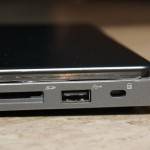
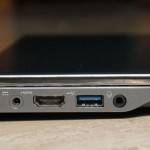
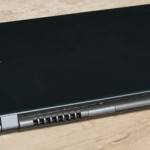
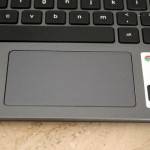
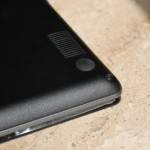
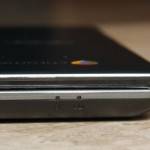
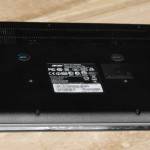
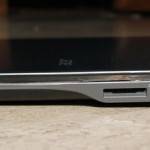
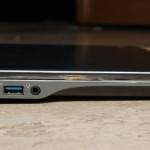
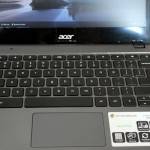

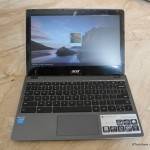

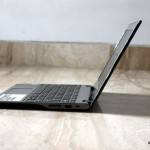























FYI – You can set the magnifying glass button to be your caps lock. Just go to your settings.